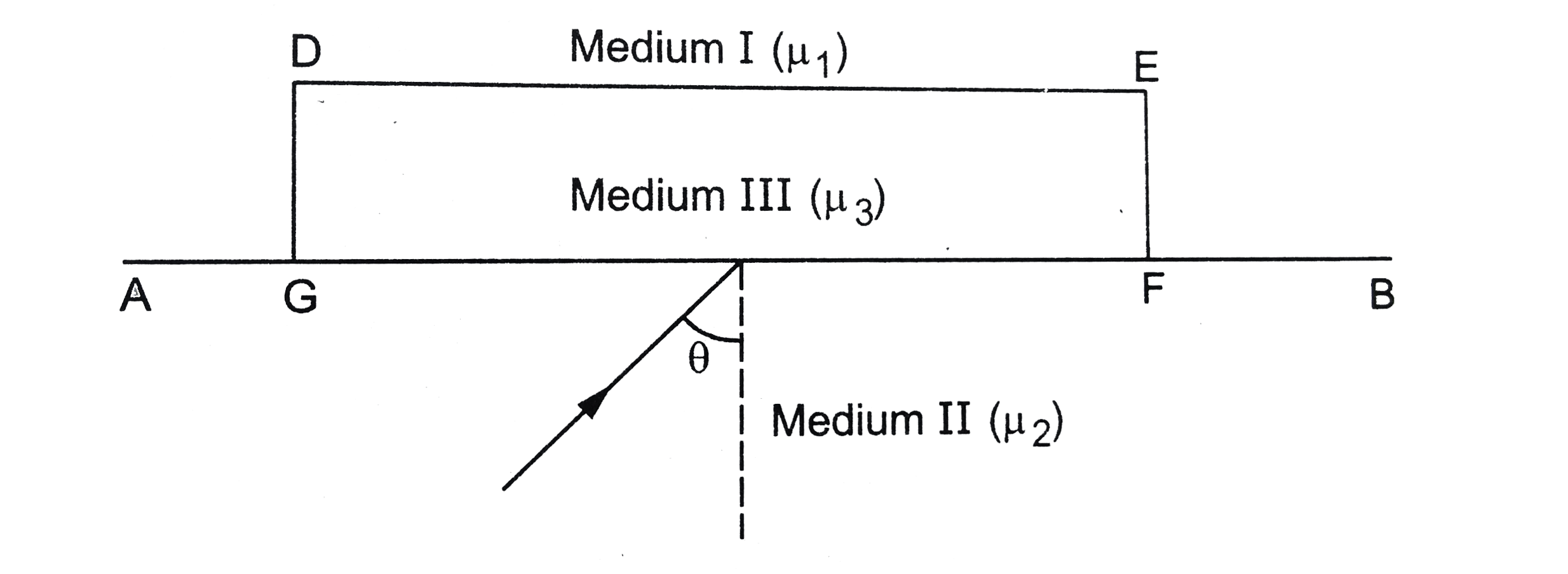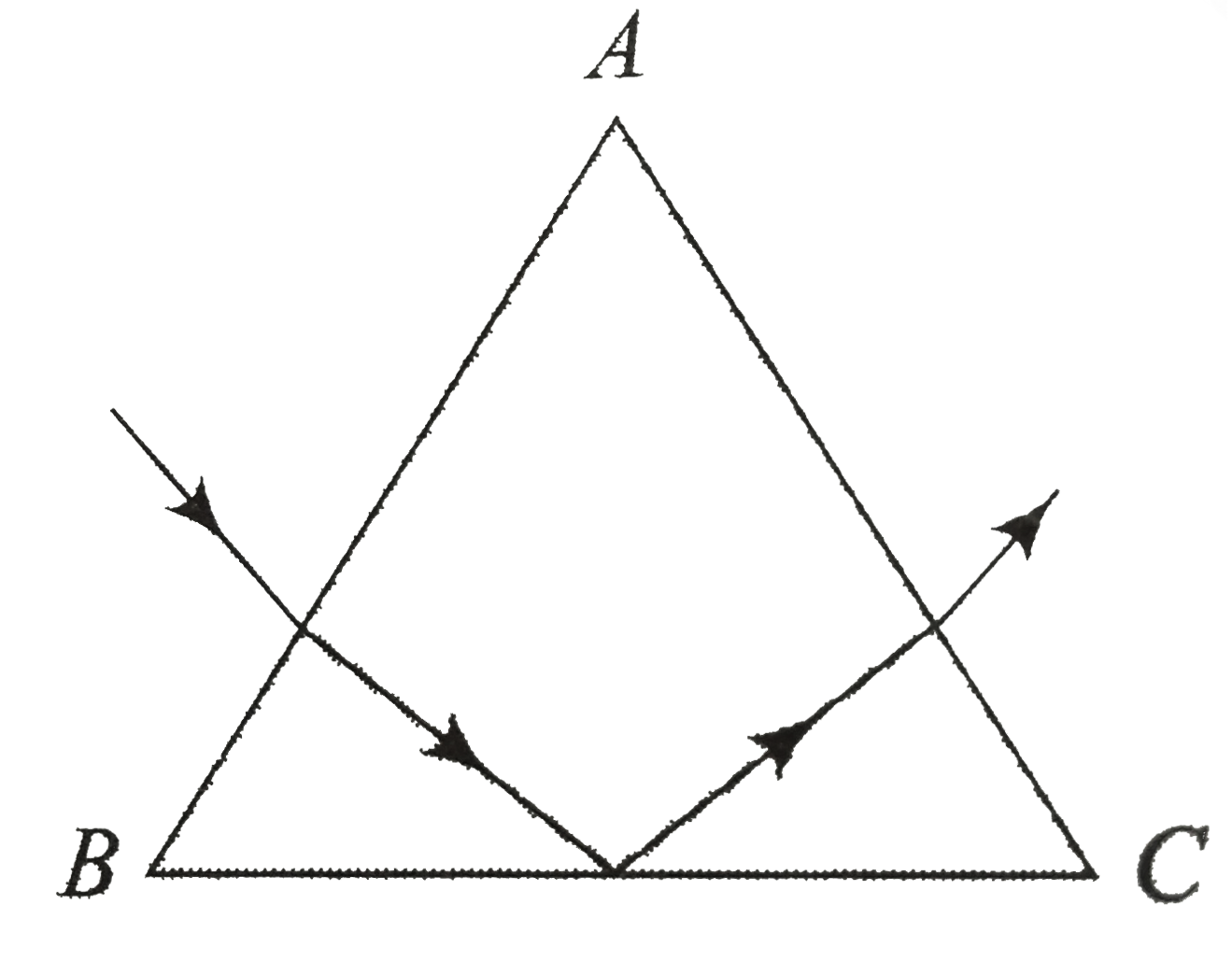Assertion : In optical fibre, the diameter of the core is kept small.
Reason : This smaller diameter of the core ensures that the fibre should have incident angle more than the critical angle required for total internal reflection.
a.If both Assertion & Reason are true and the reason is the correct explanation of the assertion.
b.if both assertion and reason are true but reason is not the correct expalanation of the assertion
c.if assertion is true , but reason is false
d.both assertion and reason are false statements.
The correct Answer is:A
To solve the question, we need to analyze both the assertion and the reason provided.
1. Understanding the Assertion:
- The assertion states that "In optical fibre, the diameter of the core is kept small."
- This is true because a smaller core diameter allows for better confinement of light within the core, which is essential for the functioning of optical fibers.
2. Understanding the Reason:
- The reason states that "This smaller diameter of the core ensures that the fibre should have an incident angle more than the critical angle required for total internal reflection."
- For total internal reflection to occur, the angle of incidence must be greater than the critical angle. A smaller core diameter helps achieve this condition by allowing light rays to strike the core-cladding boundary at a steeper angle.
3. Analyzing Total Internal Reflection:
- Total internal reflection occurs when light travels from a denser medium (core) to a rarer medium (cladding) and the angle of incidence exceeds the critical angle.
- The critical angle is determined by the refractive indices of the core and cladding. For total internal reflection to happen, the refractive index of the core (μ1) must be greater than that of the cladding (μ2).
4. Conclusion:
- Since both the assertion and reason are true, and the reason correctly explains the assertion, we conclude that the assertion is true and the reason is also true, providing a correct explanation for the assertion.
Final Answer:
- Both the assertion and reason are true, and the reason is a correct explanation of the assertion.
- The assertion states that "In optical fibre, the diameter of the core is kept small."
- This is true because a smaller core diameter allows for better confinement of light within the core, which is essential for the functioning of optical fibers.
- The reason states that "This smaller diameter of the core ensures that the fibre should have an incident angle more than the critical angle required for total internal reflection."
- For total internal reflection to occur, the angle of incidence must be greater than the critical angle. A smaller core diameter helps achieve this condition by allowing light rays to strike the core-cladding boundary at a steeper angle.
- Total internal reflection occurs when light travels from a denser medium (core) to a rarer medium (cladding) and the angle of incidence exceeds the critical angle.
- The critical angle is determined by the refractive indices of the core and cladding. For total internal reflection to happen, the refractive index of the core (μ1) must be greater than that of the cladding (μ2).
- Since both the assertion and reason are true, and the reason correctly explains the assertion, we conclude that the assertion is true and the reason is also true, providing a correct explanation for the assertion.
- Both the assertion and reason are true, and the reason is a correct explanation of the assertion.
Similar Questions
The refractive index of the core of an optical fibre is μ2 and that of the cladding is μ1. The angle of incidence on the face of the core of that the light ray just under goes total internal reflection at the cladding is
View SolutionA sept index fibre has a relavitive refractive index of 0.88%. What is the critical angle at the core-cladding interface?
View Solution
Knowledge Check
Assertion : Optical fibres make use of total internal reflection.
Reason : Light undergoes successive total internal reflections as it moves through an optical fibre.AIf both assertion and reason are true and reason is the correct explanation of assertion.BIf both assertion and reason are true and reason is not the correct explanation of assertion.CIf assertion is true but reason is false.DIf both assertion and reason are false.
Monochramatic light is incident on the pLane interface AB between two media of refractive indices μ1 and μ2(μ2>μ1) at an angle of incidence theta as shown in figure. The angle theta is infinitesimally greater thannte critical angle for the two media so thast total internal reflection takes place. Now, if a transparent slab DEFG of uniform thickness and of refractive inde μ2 is introduced on theinterface (as shown in figure ) , show that for any value of μ2 all light will ultimately be reflected back into medium II.

View SolutionIn total internal reflection when the angle of incidence is equal to the critical angle for the pair of medium in contact, what will be angle of refraction? In total internal reflection when the angle of incidence is equal to the critical angle for the pair of medium in contact, what will be angle of refraction? In total internal reflection when the angle of incidence is equal to the critical angle for the pair of medium in contact, what will be angle of refraction?
View SolutionA step index fibre has a relative refractive index difference of 0.86% Estimate the critical angle at the core-cladding interface
View SolutionA silicon optical fibre with a core diameter large enough has a core refractive index of 1.50 and a cladding refrcative index 1.47.Determine(i)the critical angle at the core cladding interface.(ii)the numerical aperture for the fibre.(iii)the acceptance angle in air for the fibre.
View SolutionAn optical fibre (RI = 1.72) is surrounded by a glass coating (RI= 1.50). Find the critical angle for total internal reflection at the fibre-glass interface.
View SolutionThe path of a ray of light passing through an equilateral glass prism ABC is shown in figure. The ray of light is incident on face BC at the critical angle for just total internal reflection. The total internal reflection. The total angle of deviation after the refraction at face AC is 108∘. Calculate the refractive index of the glass.

View SolutionA container made of glass (μ=1.5) contains a liquid. A ray of light passing through the liquid falls on the bottom of the container at an angle of incidence θ=tan−1(0.9) and completely polarized. The ray should strike the bottom of the container at an angle of incidences so that it undergoes total internal reflection
View Solution
